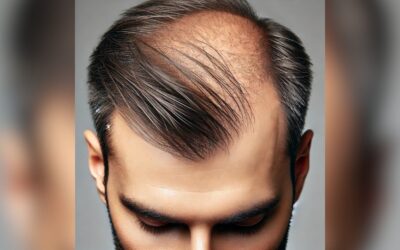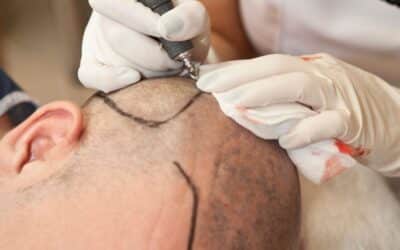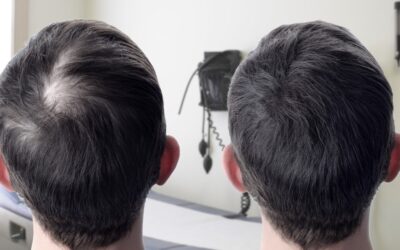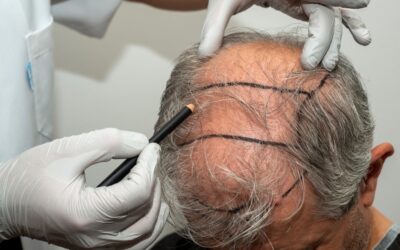Are You Experiencing Hair Transplant 4 Months No Growth
Finally taking the leap and getting a hair transplant procedure is a big step for a lot of us. The majority of men and women suffering from hair loss try pretty much anything to stop the progression of hairloss. Anything to get back the confidence that comes with a head of full thick hair. With the modern hair transplant surgery technique like Follicular Unit Extraction (FUE), hair transplant results look as natural as the hair did before their hair loss began to happen. It’s the best option for most hairloss patients to restore their thinning or missing hair. However, when you finally take the plunge and experience hair transplant 4 months no growth happens, it can be a very scary and concerning situation.
4 months is a long time to wait for results from a hair surgery. If there have been little or even no results at that point, some anxiety is understandable. You may regret your decision. You may wonder what went wrong? Did you mess up? What happened? Endless questions and answers dance around in your mind.
There are many reasons this could happen, but it would be best if we first understand how our hair progresses through its natural growth cycle. That way we understand the timeline of hair regrowth after a transplant. This cycle is understandably upset during the procedure, just like all surgeries affect the body. Sometimes this will cause a delay in the growth cycle. On the other hand, there are plenty of other factors that may result in hair transplant 4 months no growth. But first things first!
The Stages of Hair Growth
Unlike most other mammals, we humans shed our hair on a consistent basis, instead of on a seasonal or cyclical schedule. We will lose from 50 to 100 hairs per day in a normal shedding cycle that will not equate to hair loss. All the hair on your head falls in one of these three stages of hair growth at any given time.
The Anagen Phase
The anagen phase is the active growing phase of your hair. This is when the cells in the hair follicle are dividing rapidly, and new hair is growing actively from the bulb. During this phase, the new hair grows up and out of the root of the follicle and will often push out the old hair that has completed the cycle, so it sheds from the scalp.
The anagen phase normally lasts for two to six years. The majority of the hair on your head sits in this phase at any given time. The anagen phase is responsible for how long people can naturally grow their hair. People who can easily grow their hair out long will have a longer, more productive anagen phase. On the other hand, people who have naturally short hair have a much shorter natural anagen phase.
The Catagen Phase
In the catagen phase, also known as the “transitional phase,” only 3% of the hair on your head persists in this phase. This is when the hair growth slows down and stops as the hair prepares to enter the third and final stage of the process. The catagen phase normally lasts right around 2 to 3 weeks.
The Telogen Phase
The third and final phase of the stages of hair growth is the telogen phase. During this phase, the hair follicle is completely inactive and at rest, with no growth occurring at all. The hair detaches from the hair follicle and waits to shed. This shedding happens on its own or happens when the new hair that is formed during the anagen phase pushes it from the scalp. The telogen phase normally lasts for around 100 days. On a normal scalp, 6% to 8% of the hair persists in the telogen phase at any given time.
If you have undergone a hair transplant 4 months no growth has occurred, then there is a possibility that the transplanted hair has been “stuck” in any one stage of the hair growth process. When a hair transplant occurs, to the naked eye it seems as though it is the hair itself that has been transplanted, but it is the hair follicle itself that is important. The follicle is responsible for growing and shedding the hair, and as the follicle sits beneath the skin, you cannot see what it is doing, if anything after transplantation.
Next, we will go over the month-by-month process so that we can identify if your hair transplant 4 months no growth issue is a normal part of the process, or if there is a problem that needs to be addressed.
Month-by-Month After Hair Transplant Guide
Regardless of which kind of hair transplant you have decided to get, the healing process is generally the same. The implantation process with both an FUE and FUT surgery is the same and what happens after a successful transplant is in line with both procedures.
Right around two weeks to a month after a hair transplant, it is normal to see some hair shedding. If you are not prepared for this, it can be a very scary sight to see your brand-new hair falling out right after surgery. What is happening here is the hair that was attached to the hair follicle that was transplanted is shedding. This must happen so that the anagen phase can begin and the transplanted hair follicle can grow new hair. What’s even more alarming during this process is that at the base of the shed hair is a small dot and a lot of people mistake it for the follicle. Rest assured that it is just the base of the hair shaft and that the transplanted hair follicles remain safe in their new homes.
After this shedding process, the new hair follies enter the telogen phase which normally lasts right around 8-10 weeks. This is another natural and expected part of the healing process. Each individual hair will be on its own schedule during this time so your transplanted hair may take on a temporary “patchy” appearance.
Hair Transplant 4 Months No Growth is Not Typical
Experiencing hair transplant 4 months no growth is not typical. In fact, it’s abnormal and quite rare. It is normally between 3 to 6 months that you “should” be seeing the beginning of new hair growing from the transplanted follicles. The new hair may take on the appearance of body hair at first, and be very thick and curly, which could cause another “patchy” look. So, if you’re at the 4-month mark and see no new hair growth, this is cause for concern.
Between the 9 and 15-month mark after your hair transplant is when you will see the new hair growing out longer and thicker. This is when you can normally expect to see the final results of your surgery manifest. At this time, you may be able to get your new hair styled. However, make sure your stylist or barber only uses scissors and not any kind of cutting instrument.
What Went Wrong if Hair Transplant 4 Months No Growth Happens?
The 4-month stage after a hair transplant is right in the middle of the process where you should be seeing the new hair follicles entering the anagen phase. This should cause new hair to be sprouting from the follies and erupting through the skin of the scalp.
Now, we say that new hair will begin to grow around 4 to 6 months after the hair transplant because everyone is different. Just because after your hair transplant 4 months no growth has occurred doesn’t mean that something is wrong, or that the hair transplant was a failure. It could just be that your hair follicles are spending more time on the telogen phase than normal and the growth just hasn’t happened yet.
That’s not to say that there isn’t a lot that can go wrong with a hair transplant. An FUE hair transplant is a very delicate procedure. If it is not done correctly then the transplanted follicles will never grow new hair. Consequently, the whole procedure can turn into a big waste of time and money. When the individual hair follicles are extracted, the surgeon must carefully ensure that the root of the hair follicle or the “bulb” is not damaged. If the bulb is damaged, then what is called a hair “transection” occurrs. (Ahmad, 2020).
Did You Get Your Transplant From a Skilled Surgeon?
Every single hair transplant that has ever taken place has involved hair transections. However, the skill and experience of the surgeon performing the surgery will determine the hair transection rate. A highly skilled hair transplant specialist, such as the ones we have here at Best Hair Transplant Los Angeles, will normally have a transection rate of around 5%. An inexperienced dermatologist not very familiar in hair transplants may hover right around a 20-30% transection rate.
When the transection rate gets over the 60% mark, is when you will be looking at a failed hair transplant. Everyone that undergoes a transplant will have a limited amount of donor hair. If more than half of the transplanted hair follicles do not survive, then that donor hair is wasted. Also, when the hair that did survive starts to grow, there will be a permeant “patchy” appearance to the scalp, resembling hair plugs.
Don’t Get Lazy with Surgical Aftercare!
Another common reason you could be looking at a hair transplant 4 months no growth is because there was an issue with the aftercare. Directly after your procedure, the surgeon provides detailed post-op instructions. It is critically important that you follow these instructions to the letter if you want to avoid a failed hair transplant. You could have had the most skilled hair transplant specialist in all of the world perform your surgery, and if you decide to join a mosh pit the next day or play in a waterfall, you can expect your hair transplant to fail.
It normally takes 2-3 months before the transplanted hair follicles become fully secure in their new homes. Within the first week after surgery, they are the most fragile, and any sort of rubbing or scrapping can and will dislodge them and they will fall out. One of the most common culprits that will cause this is itching.
A hair transplant is a minor surgery. As your scalp heals around the newly transplanted hair follicles, there will be some normal scabbing that forms, and along with the scabs will come the itching. It is very important that you do not scratch your itchy scalp, because if you do you will lose the transplanted hair follicles.
Were You a Good Candidate for Hair Transplants in the First Place?
Another common reason that hair transplants fail is that the patient was never a good candidate for a hair transplant in the first place. There are a lot of disreputable FUE clinics that will just sell their hair transplants to everyone who walks in their doors regardless of if they’re a good candidate or not. Generally, these clinics will use under-qualified doctors and medical assistants to perform the surgeries and are just trying to make as much money as possible off of their patients.
There are a few reasons that someone will not be a good hair transplant candidate. Young men who experience hair loss early, sometimes beginning in their early 20s, will seek out hair transplants surgeries. What they do not understand is that hair loss is progressive, and even after they get an FUE or FUT surgery, they will continue to lose their hair, while their transplanted hair will remain. Then these young men will have to get additional hair transplants to keep a natural-looking hairline.
If you have made sure your doctor was a skilled hair transplant specialist, and that you followed all of your post-op instructions to the letter but still your hair transplant 4 months no growth is happening, it could be that the donor hair that was transplanted was not healthy enough to survive. During a pre-op consultation, your surgeon should give you a thorough examination, which includes inspecting the specified donor hair. In order to be a good candidate for a hair transplant surgery, you must have enough healthy and strong donor hair to cover the area affected by hair loss.
Trust Our Specialists at Best Hair Transplants Los Angeles
Here at Best Hair Transplants Los Angeles, we are an FUE clinic that only employs hair transplant specialists to perform the surgeries. All of our doctors and surgeons make hair transplants their business and have some of the best transection rates in the industry.
We have some of the best pricing structures for hair transplants in Los Angeles in town. How? We keep our overhead low so that we can pass those savings on to you. At Best Hair Transplant, we do things differently. We actually care about each one of our patients and make it our goal to ensure that they get back their head of full hair and the confidence that goes along with it.
Call us today and set up your complimentary consultation with one of our hair transplant specialists. Whether you’re ready for your first transplant or you’re worried about hair transplant 4 months no growth and need a second opinion or repair procedure, we’re here to help you through the process and decide what’s best for you.
SUFFERING FROM HAIR LOSS?
Best Hair Transplant is the best place to schedule your hair transplant in Los Angeles. We’ve helped both men and women regrow their lost hair. But don’t take our word for it. We suggest learning as much as possible about hair restoration. Do so prior to making a decision on how to address your hair loss. Not every procedure is right for everyone.
At Best Hair Transplant, we’re proud of our results and happy to provide hair restoration services. Additionally, we’re proud to make hair transplants affordable and help you save money on a variety of hair transplants.
To ensure your ease of mind, you can view our customer recommendations HERE. Furthermore, you can also see our Google reviews and Yelp reviews. We can’t wait to help you start restoring your lost hair.
YOUR HAIR RESTORATION SOLUTION
Best Hair Transplant
1970 S. Prospect Ave., Suite 2
Redondo Beach, CA 90277
(213) 403-0455











